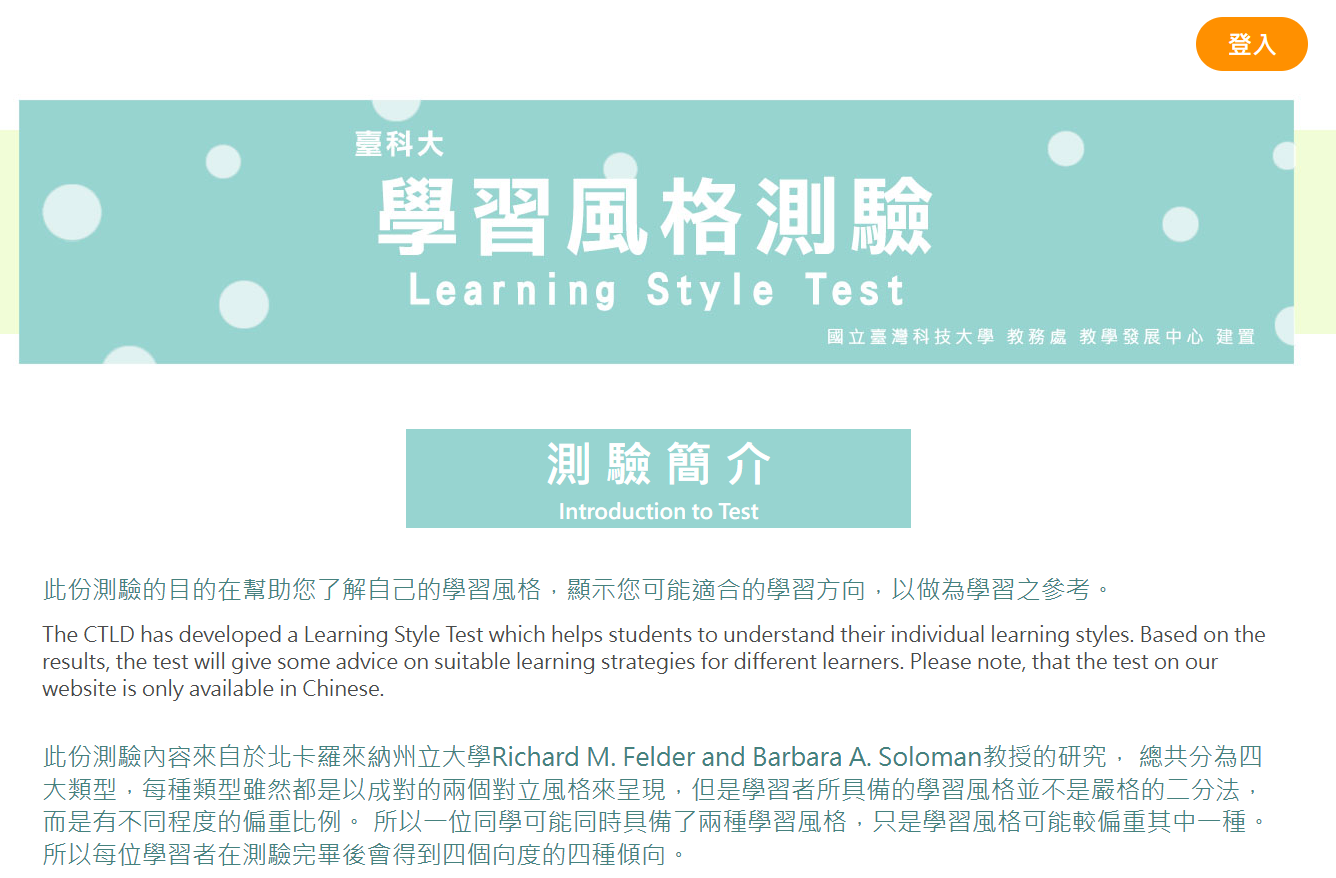Learning styles test http://fsils.ntust.edu.tw/index.php/frontend
- The CTLD has developed a Learning Style Test which helps students to understand their individual learning styles. Based on the results, the test will give some advice on suitable learning strategies for different learners. Please note, that the test on our website is only available in Chinese.
- The test is based on the results of research done by Professors Richard M. Felder and Barbara A. Soloman of North Carolina State University. The test is used to assess preferences on four dimensions: active/reflective, sensing/intuitive, visual/verbal, and sequential/global. Although each type is presented in pairs, the test will not categorize learners as belonging to one style or another, the test rather shows learning preferences which learners have to a certain degree. Thus, a student may have two learning styles at the same time, but might have a stronger preference for one or the other.
◆ Active and Reflective
Active learners are more suitable for team learning, and prefer to actively add some activities to understand the information obtained, such as: participating in discussions, making practical use of acquired knowledge, or explaining the information to others in their own words; Reflective learners prefer to think about new information quietly first.
◆ Sensing and Intuitive
Sensing learners tend to like learning facts, and prefer to solve problems by well-established methods. Also, they tend to be patient with details and good at memorizing facts and doing hands-on (laboratory) work. They dislike complications and surprises. Intuitive learners often prefer discovering possibilities and relationships. They may be good at grasping new concepts and are often more comfortable than with abstractions than sensing learners. Also they like innovation and dislike repetition.
◆ Visual type and Verbal type
Visual learners remember best what they see - pictures, diagrams, flow charts, time lines, films, and demonstrations. Verbal learners get more out of words - written and spoken explanations. Everyone learns more when information is presented both visually and verbally.
◆ Sequential and Overall
Sequential learners tend to gain understanding in linear steps, with each step following logically from the previous one. Global learners tend to learn in large jumps, absorbing material almost randomly without seeing connections, and then suddenly “getting it.”

